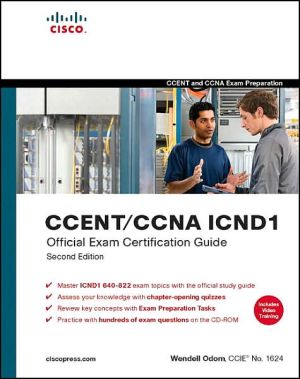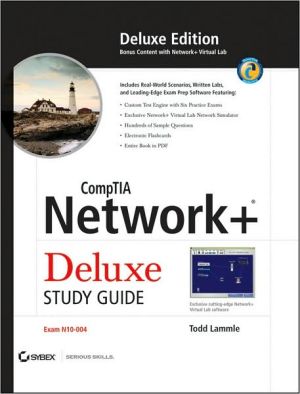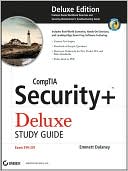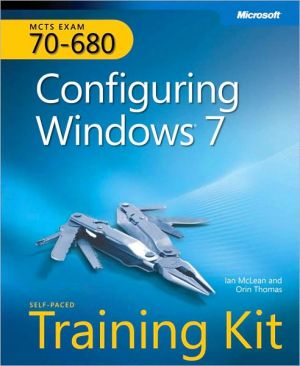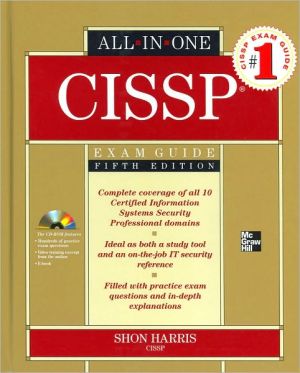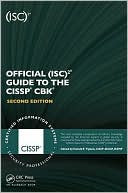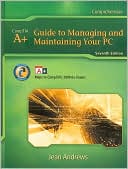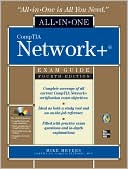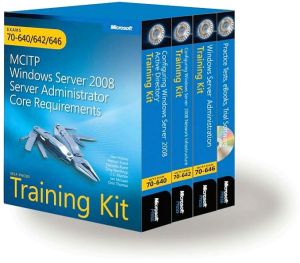CCNA INTRO Official Exam Certification Guide
CCENT/CCNA ICND1 Official Exam Certification Guide\ Second Edition\ \ \ Master ICND1 640-822 exam topics with the official study guide\ Assess your knowledge with chapter-opening quizzes\ Review key concepts with Exam Preparation Tasks\ Practice with hundreds of exam questions on the CD-ROM\ \ Wendell Odom, CCIE® No. 1624\ CCENT/CCNA ICND1 Official Exam Certification Guide, Second Edition, is a best of breed Cisco® exam study guide that focuses specifically on the objectives for the...
Search in google:
CCENT/CCNA ICND1 Official Exam Certification GuideSecond Edition Master ICND1 640-822 exam topics with the official study guide Assess your knowledge with chapter-opening quizzes Review key concepts with Exam Preparation Tasks Practice with hundreds of exam questions on the CD-ROMWendell Odom, CCIE® No. 1624CCENT/CCNA ICND1 Official Exam Certification Guide, Second Edition, is a best of breed Cisco® exam study guide that focuses specifically on the objectives for the CCENT™ and CCNA® ICND1 exam. This fully updated edition presents complete reviews and a more challenging and realistic exam preparation experience.Senior instructor and best-selling author Wendell Odom shares preparation hints and test-taking tips, helping you identify areas of weakness and improve both your conceptual knowledge and hands-on skills. The material is presented in a concise manner, focused on increasing your understanding of exam topics and preparing you for the numerous challenges the exams present.CCENT/CCNA ICND1 Official Exam Certification Guide, Second Edition, presents you with an organized test preparation routine through the use of proven series elements and techniques. “Do I Know This Already?” quizzes open each chapter and allow you to decide how much time you need to spend on each section. Chapter-ending Exam Preparation Tasks sections help you drill on key concepts you must know thoroughly and help increase your speed in answering questions, a difficult hurdle many exam candidates face on the new exams. A Final Preparation chapter guides you through tools and resources to help you craft your final study plan. Special troubleshooting sections help you master the complex scenarios you will face on the exam.The companion CD-ROM contains a powerful testing engine that allows you to focus on individual topic areas or take complete, timed exams. The assessment engine also tracks your performance and provides feedback on a chapter-by-chapter basis, presenting question-by-question remediation to the text. The bonus DVD contains more than60 minutes of personal video mentoring from the author focused mainly on bringing difficult subnetting concepts to life.Well-regarded for its level of detail, assessment features, and challenging practice questions, this book provides you with more detailed information and more realistic practice exercises than any other CCNA study guide, enabling you to succeed on the exam the first time.CCENT/CCNA ICND1 Official Exam Certification Guide, Second Edition, is part of a recommended learning path from Cisco that includes simulation and hands-on training from authorized Cisco Learning Partners and self-study products from Cisco Press. To find out more about instructor-led training, e-learning, and hands-on instruction offered by authorized Cisco Learning Partners worldwide, please visit www.cisco.com/go/authorizedtraining.Wendell Odom, CCIE® No. 1624, has been in the networking industry since 1981. He currently teaches QoS, MPLS, and CCNA courses for Skyline Advanced Technology Services (www.skyline-ats.com). Wendell has worked as a network engineer, consultant, systems engineer, and instructor and course developer, and has taught authorized Cisco courses for the majority of the last 14 years.The official study guide helps you master all the topics on the CCENT and CCNA ICND1 exam, including TCP/IP and OSI networking models Operating Cisco routers and LAN switches Ethernet switch configuration and troubleshooting Wireless LANs IP addressing and subnetting Routing protocols Router configuration and troubleshooting Network Security WAN concepts and configurationCompanion CD-ROMThe CD-ROM contains an electronic copy of the book and 200 practice questions for the ICND1 and full CCNA exams, including simulation and testlet questions, all available in study mode and test mode.BONUS DVDThe DVD contains more than 60 minutes of personal instruction from the author.This volume is part of the Exam Certification Guide Series from Cisco Press®. Books in this series provide officially developed exam preparation materials that offer assessment, review, and practice to help Cisco Career Certification candidates identify weaknesses, concentrate their study efforts, and enhance their confidence as exam day nears.Category: Cisco Press–Cisco CertificationCovers: CCENT and CCNA ICND1 Exam 640-822
CCENT/CCNA ICND1 Official Exam Certification Guide,CCENT/CCNA ICND1 Official Exam Certification Guide, Second EditionIntroduction\ Congratulations! If you're reading this Introduction, you've probably already decided to go for your Cisco certification. If you want to succeed as a technical person in the networking industry, you need to know Cisco. Cisco has a ridiculously high market share in the router and switch marketplace—more than 80 percent in some markets. In many geographies and markets around the world, networking equals Cisco. If you want to be taken seriously as a network engineer, Cisco certification makes sense.\ Historically speaking, the first entry-level Cisco certification has been the Cisco Certified Network Associate (CCNA) certification, first offered in 1998. The first three versions of the CCNA certification (1998, 2000, and 2002) required that you pass a single exam to become certified. However, over time, the exam kept growing, both in the amount of material covered and the difficulty level of the questions. So, for the fourth major revision of the exams, announced in 2003, Cisco continued with a single certification (CCNA) but offered two certification options: a single exam option and a two-exam option. The two-exam option allowed people to study roughly half the material and then take and pass one exam before moving on to the next.\ Cisco announced changes to the CCNA certification and exams in June 2007. This announcement includes many changes; here are the most notable:\ \ \ The exams collectively cover a broader range of topics.\ \ \ The exams increase the focus on proving the test taker's skills (ascompared with just testing knowledge).\ \ \ Cisco created a new entry-level certification: Cisco Certified Entry Networking Technician (CCENT).\ \ \ For the current certifications, announced in June 2007, Cisco created the ICND1 (640-822) and ICND2 (640-816) exams, along with the CCNA (640-802) exam. To become CCNA certified, you can pass both the ICND1 and ICND2 exams, or just the CCNA exam. The CCNA exam simply covers all the topics on the ICND1 and ICND2 exams, giving you two options for gaining your CCNA certification. The two-exam path gives people with less experience a chance to study for a smaller set of topics at one time. The one-exam option provides a more cost-effective certification path for those who want to prepare for all the topics at once.\ Although the two-exam option is useful for some certification candidates, Cisco designed the ICND1 exam with a much more important goal in mind. The CCNA certification grew to the point that it tested knowledge and skills beyond what an entry-level network technician would need. Cisco needed a certification that better reflected the skills required for entry-level networking jobs. So Cisco designed its Interconnecting Cisco Networking Devices 1 (ICND1) course, and the corresponding ICND1 640-822 exam, to include the knowledge and skills most needed by an entry-level technician in a small Enterprise network. And so that you can prove that you have the skills required for those entry-level jobs, Cisco created a new certification, CCENT.\ Figure I-1 shows the basic organization of the certifications and the exams used to get your CCENT and CCNA certifications. (Note that there is no separate certification for passing the ICND2 exam.)\ Figure I-1\ Cisco Entry-Level Certifications and Exams\ As you can see, although you can obtain the CCENT certification by taking the ICND1 exam, you do not have to be CCENT certified before getting your CCNA certification. You can choose to take just the CCNA exam and bypass the CCENT certification.\ The ICND1 and ICND2 exams cover different sets of topics, with a minor amount of overlap. For example, ICND1 covers IP addressing and subnetting, and ICND2 covers a more complicated use of subnetting called variable-length subnet masking (VLSM). Therefore, ICND2 must then cover subnetting to some degree. The CCNA exam covers all the topics covered on both the ICND1 and ICND2 exams.\ Although the popularity of the CCENT certification cannot be measured until a few years have passed, certainly the Cisco CCNA is the most popular entry-level networking certification program. A CCNA certification proves that you have a firm foundation in the most important components of the Cisco product line—routers and switches. It also proves that you have broad knowledge of protocols and networking technologies.Format of the CCNA Exams\ The ICND1, ICND2, and CCNA exams all follow the same general format. When you get to the testing center and check in, the proctor gives you some general instructions and then takes you into a quiet room containing a PC. When you're at the PC, you have a few things to do before the timer starts on your exam. For instance, you can take a sample quiz to get accustomed to the PC and the testing engine. Anyone who has user-level skills in getting around a PC should have no problems with the testing environment. Additionally, Chapter 18, "Final Preparation," points to a Cisco website where you can see a demo of Cisco's actual test engine.\ When you start the exam, you are asked a series of questions. You answer them and then move on to the next question. The exam engine does not let you go back and change your answer. Yes, it's true. When you move on to the next question, that's it for the preceding question.\ The exam questions can be in one of the following formats:\ \ \ Multiple choice (MC)\ \ \ Testlet\ \ \ Drag-and-drop (DND)\ \ \ Simulated lab (sim)\ \ \ Simlet\ \ \ The first three types of questions are relatively common in many testing environments. The multiple-choice format simply requires that you point and click a circle beside the correct answer(s). Cisco traditionally tells you how many answers you need to choose, and the testing software prevents you from choosing too many. Testlets are questions with one general scenario and several multiple-choice questions about the overall scenario. Drag-and-drop questions require you to click and hold, move a button or icon to another area, and release the mouse button to place the object somewhere else—typically in a list. For some questions, to get the question correct, you might need to put a list of five things in the proper order.\ The last two types of questions use a network simulator to ask questions. Interestingly, the two types actually allow Cisco to assess two very different skills. First, sim questions generally describe a problem, and your task is to configure one or more routers and switches to fix it. The exam then grades the question based on the configuration you changed or added. Interestingly, sim questions are the only questions (to date) for which Cisco has openly confirmed it gives partial credit for.\ The simlet questions may well be the most difficult style of question. Simlet questions also use a network simulator, but instead of having you answer by changing the configuration, the question includes one or more multiple-choice questions. The questions require that you use the simulator to examine a network's current behavior, interpreting the output of any show commands you can remember to answer the question. Whereas sim questions require you to troubleshoot problems related to a configuration, simlets require you to analyze both working networks and networks with problems, correlating show command output with your knowledge of networking theory and configuration commands.What's on the CCNA Exam(s)?\ Ever since I was in grade school, whenever the teacher announced that we were having a test soon, someone would always ask, "What's on the test?" Even in college, people would try to get more information about what would be on the exams. The goal is to know what to study a lot, what to study a little, and what to not study at all.\ Cisco wants the public to know the variety of topics and have an idea of the kinds of knowledge and skills required for each topic, for every Cisco certification exam. To that end, Cisco publishes a set of objectives for each exam. The objectives list the specific topics such as IP addressing, RIP, and VLANs. The objectives also imply the kinds of skills required for that topic. For example, one objective might start with "Describe...", and another might begin with "Describe, configure, and troubleshoot...". The second objective clearly states that you need a thorough understanding of that topic. By listing the topics and skill level, Cisco helps you prepare for the exams.\ Although the exam objectives are helpful, keep in mind that Cisco adds a disclaimer that the posted exam topics for all its certification exams are guidelines. Cisco makes an effort to keep the exam questions within the confines of the stated exam objectives. I know from talking to those involved that every question is analyzed to ensure that it fits within the stated exam topics.ICND1 Exam Topics\ Table I-1 lists the exam topics for the ICND1 exam. The ICND2 exam topics follow in Table I-2. Although the posted exam topics are not numbered at Cisco.com, Cisco Press numbers them for easier reference. The tables also note the book parts in which each exam topic is covered. Because the exam topics may change over time, it may be worth it to double-check the exam topics listed on Cisco.com (go to http://www.cisco.com/go/ccna). If Cisco does happen to add exam topics at a later date, note that Appendix C, "ICND1 Exam Updates," describes how to go to http://www.ciscopress.com and download additional information about those newly added topics.\ \ NOTE - The table includes gray highlights that are explained in the upcoming section "CCNA Exam Topics."\ \ Table I-1 - ICND1 Exam Topics\ \ \ \ \ \ \ \ \ Reference Number\ \ \ Book Part(s) Where Topic Is Covered\ \ \ Exam Topic\ \ \ \ \ \ \ \ \ \ \ Describe the operation of data networks\ \ \ \ \ 1\ \ \ I\ \ \ Describe the purpose and functions of various network devices\ \ \ \ \ 2\ \ \ I\ \ \ Select the components required to meet a given network specification\ \ \ \ \ 3\ \ \ I, II, III\ \ \ Use the OSI and TCP/IP models and their associated protocols to explain how data flows in a network\ \ \ \ \ 4\ \ \ I\ \ \ Describe common networking applications including web applications\ \ \ \ \ 5\ \ \ I\ \ \ Describe the purpose and basic operation of the protocols in the OSI and TCP models\ \ \ \ \ 6\ \ \ I\ \ \ Describe the impact of applications (Voice Over IP and Video Over IP) on a network\ \ \ \ \ 7\ \ \ IIV\ \ \ Interpret network diagrams\ \ \ \ \ 8\ \ \ IIV\ \ \ Determine the path between two hosts across a network\ \ \ \ \ 9\ \ \ I, III, IV\ \ \ Describe the components required for network and Internet communications\ \ \ \ \ 10\ \ \ IIV\ \ \ Identify and correct common network problems at Layers 1, 2, 3, and 7 using a layered model approach\ \ \ \ \ 11\ \ \ II, III\ \ \ Differentiate between LAN/WAN operation and features\ \ \ \ \ \ \ \ \ \ \ Implement a small switched network\ \ \ \ \ 12\ \ \ II\ \ \ Select the appropriate media, cables, ports, and connectors to connect switches to other network devices and hosts\ \ \ \ \ 13\ \ \ II\ \ \ Explain the technology and media access control method for Ethernet technologies\ \ \ \ \ 14\ \ \ II\ \ \ Explain network segmentation and basic traffic management concepts\ \ \ \ \ 15\ \ \ II\ \ \ Explain the operation of Cisco switches and basic switching concepts\ \ \ \ \ 16\ \ \ II\ \ \ Perform, save, and verify initial switch configuration tasks including remote access management\ \ \ \ \ 17\ \ \ II\ \ \ Verify network status and switch operation using basic utilities (including: ping, traceroute, Telnet, SSH, ARP, ipconfig), show and debug commands\ \ \ \ \ 18\ \ \ II\ \ \ Implement and verify basic security for a switch (port security, deactivate ports)\ \ \ \ \ 19\ \ \ II\ \ \ Identify, prescribe, and resolve common switched network media issues, configuration issues, autonegotiation, and switch hardware failures\ \ \ \ \ \ \ \ \ \ \ Implement an IP addressing scheme and IP services to meet network requirements for a small branch office\ \ \ \ \ 20\ \ \ I, III\ \ \ Describe the need for and role of addressing in a network\ \ \ \ \ 21\ \ \ I, III\ \ \ Create and apply an addressing scheme to a network\ \ \ \ \ 22\ \ \ III\ \ \ Assign and verify valid IP addresses to hosts, servers, and networking devices in a LAN environment\ \ \ \ \ 23\ \ \ IV\ \ \ Explain the basic uses and operation of NAT in a small network connecting to one ISP\ \ \ \ \ 24\ \ \ I, III\ \ \ Describe and verify DNS operation\ \ \ \ \ 25\ \ \ III, IV\ \ \ Describe the operation and benefits of using private and public IP addressing\ \ \ \ \ 26\ \ \ III, IV\ \ \ Enable NAT for a small network with a single ISP and connection using SDM and verify operation using CLI and ping\ \ \ \ \ 27\ \ \ III\ \ \ Configure, verify, and troubleshoot DHCP and DNS operation on a router (including: CLI/SDM)\ \ \ \ \ 28\ \ \ III\ \ \ Implement static and dynamic addressing services for hosts in a LAN environment\ \ \ \ \ 29\ \ \ III\ \ \ Identify and correct IP addressing issues\ \ \ \ \ \ \ \ \ \ \ Implement a small routed network\ \ \ \ \ 30\ \ \ I, III\ \ \ Describe basic routing concepts (including: packet forwarding, router lookup process)\ \ \ \ \ 31\ \ \ III\ \ \ Describe the operation of Cisco routers (including: router bootup process, POST, router components)\ \ \ \ \ 32\ \ \ I, III\ \ \ Select the appropriate media, cables, ports, and connectors to connect routers to other network devices and hosts\ \ \ \ \ 33\ \ \ III\ \ \ Configure, verify, and troubleshoot RIPv2\ \ \ \ \ 34\ \ \ III\ \ \ Access and utilize the router CLI to set basic parameters\ \ \ \ \ 35\ \ \ III\ \ \ Connect, configure, and verify operation status of a device interface\ \ \ \ \ 36\ \ \ III\ \ \ Verify device configuration and network connectivity using ping, traceroute, Telnet, SSH, or other utilities\ \ \ \ \ 37\ \ \ III\ \ \ Perform and verify routing configuration tasks for a static or default route given specific routing requirements\ \ \ \ \ 38\ \ \ III\ \ \ Manage IOS configuration files (including: save, edit, upgrade, restore)\ \ \ \ \ 39\ \ \ III\ \ \ Manage Cisco IOS\ \ \ \ \ 40\ \ \ III\ \ \ Implement password and physical security\ \ \ \ \ 41\ \ \ III\ \ \ Verify network status and router operation using basic utilities (including: ping, traceroute, Telnet, SSH, ARP, ipconfig), show and debug commands\ \ \ \ \ \ \ \ \ \ \ Explain and select the appropriate administrative tasks required for a WLAN\ \ \ \ \ 42\ \ \ II\ \ \ Describe standards associated with wireless media (including: IEEE, Wi-Fi Alliance, ITU/FCC)\ \ \ \ \ 43\ \ \ II\ \ \ Identify and describe the purpose of the components in a small wireless network (including: SSID, BSS, ESS)\ \ \ \ \ 44\ \ \ II\ \ \ Identify the basic parameters to configure on a wireless network to ensure that devices connect to the correct access point\ \ \ \ \ 45\ \ \ II\ \ \ Compare and contrast wireless security features and capabilities of WPA security (including: open, WEP, WPA-1/2)\ \ \ \ \ 46\ \ \ II\ \ \ Identify common issues with implementing wireless networks\ \ \ \ \ \ \ \ \ \ \ Identify security threats to a network and describe general methods to mitigate those threats\ \ \ \ \ 47\ \ \ I\ \ \ Explain today's increasing network security threats and the need to implement a comprehensive security policy to mitigate the threats\ \ \ \ \ 48\ \ \ I\ \ \ Explain general methods to mitigate common security threats to network devices, hosts, and applications\ \ \ \ \ 49\ \ \ I\ \ \ Describe the functions of common security appliances and applications\ \ \ \ \ 50\ \ \ I, II, III\ \ \ Describe security recommended practices including initial steps to secure network devices\ \ \ \ \ \ \ \ \ \ \ Implement and verify WAN links\ \ \ \ \ 51\ \ \ IV\ \ \ Describe different methods for connecting to a WAN\ \ \ \ \ 52\ \ \ IV\ \ \ Configure and verify a basic WAN serial connection\ \ \ \ \ ICND2 Exam Topics\ Table I-2 lists the exam topics for the ICND2 (640-816) exam, along with the book parts in the CCNA ICND2 Official Exam Certification Guide in which each topic is covered.\ Table I-2 - ICND2 Exam Topics\ \ \ \ \ \ \ \ \ Reference Number\ \ \ Book Part(s) Where Topic Is Covered (in ICND2)\ \ \ Exam Topic\ \ \ \ \ \ \ \ \ \ \ Configure, verify, and troubleshoot a switch with VLANs and interswitch communications\ \ \ \ \ 101\ \ \ I\ \ \ Describe enhanced switching technologies (including: VTP, RSTP, VLAN, PVSTP, 802.1q)\ \ \ \ \ 102\ \ \ I\ \ \ Describe how VLANs create logically separate networks and the need for routing between them\ \ \ \ \ 103\ \ \ I\ \ \ Configure, verify, and troubleshoot VLANs\ \ \ \ \ 104\ \ \ I\ \ \ Configure, verify, and troubleshoot trunking on Cisco switches\ \ \ \ \ 105\ \ \ II\ \ \ Configure, verify, and troubleshoot interVLAN routing\ \ \ \ \ 106\ \ \ I\ \ \ Configure, verify, and troubleshoot VTP\ \ \ \ \ 107\ \ \ I\ \ \ Configure, verify, and troubleshoot RSTP operation\ \ \ \ \ 108\ \ \ I\ \ \ Interpret the output of various show and debug commands to verify the operational status of a Cisco switched network\ \ \ \ \ 109\ \ \ I\ \ \ Implement basic switch security (including: port security, unassigned ports, trunk access, etc.)\ \ \ \ \ \ \ \ \ \ \ Implement an IP addressing scheme and IP Services to meet network requirements in a medium-size Enterprise branch office network\ \ \ \ \ 110\ \ \ II\ \ \ Calculate and apply a VLSM IP addressing design to a network\ \ \ \ \ 111\ \ \ II\ \ \ Determine the appropriate classless addressing scheme using VLSM and summarization to satisfy addressing requirements in a LAN/WAN environment\ \ \ \ \ 112\ \ \ V\ \ \ Describe the technological requirements for running IPv6 (including: protocols, dual stack, tunneling, etc.)\ \ \ \ \ 113\ \ \ V\ \ \ Describe IPv6 addresses\ \ \ \ \ 114\ \ \ II, III\ \ \ Identify and correct common problems associated with IP addressing and host configurations\ \ \ \ \ \ \ \ \ \ \ Configure and troubleshoot basic operation and routing on Cisco devices\ \ \ \ \ 115\ \ \ III\ \ \ Compare and contrast methods of routing and routing protocols\ \ \ \ \ 116\ \ \ III\ \ \ Configure, verify, and troubleshoot OSPF\ \ \ \ \ 117\ \ \ III\ \ \ Configure, verify, and troubleshoot EIGRP\ \ \ \ \ 118\ \ \ II, III\ \ \ Verify configuration and connectivity using ping, traceroute, and Telnet or SSH\ \ \ \ \ 119\ \ \ II, III\ \ \ Troubleshoot routing implementation issues\ \ \ \ \ 120\ \ \ II, III, IV\ \ \ Verify router hardware and software operation using show and debug commands\ \ \ \ \ 121\ \ \ II\ \ \ Implement basic router security\ \ \ \ \ \ \ \ \ \ \ Implement, verify, and troubleshoot NAT and ACLs in a medium-size Enterprise branch office network\ \ \ \ \ 122\ \ \ II\ \ \ Describe the purpose and types of access control lists\ \ \ \ \ 123\ \ \ II\ \ \ Configure and apply access control lists based on network filtering requirements\ \ \ \ \ 124\ \ \ II\ \ \ Configure and apply an access control list to limit Telnet and SSH access to the router\ \ \ \ \ 125\ \ \ II\ \ \ Verify and monitor ACLs in a network environment\ \ \ \ \ 126\ \ \ II\ \ \ Troubleshoot ACL implementation issues\ \ \ \ \ 127\ \ \ V\ \ \ Explain the basic operation of NAT\ \ \ \ \ 128\ \ \ V\ \ \ Configure Network Address Translation for given network requirements using CLI\ \ \ \ \ 129\ \ \ V\ \ \ Troubleshoot NAT implementation issues\ \ \ \ \ \ \ \ \ \ \ Implement and verify WAN links\ \ \ \ \ 130\ \ \ IV\ \ \ Configure and verify Frame Relay on Cisco routers\ \ \ \ \ 131\ \ \ IV\ \ \ Troubleshoot WAN implementation issues\ \ \ \ \ 132\ \ \ IV\ \ \ Describe VPN technology (including: importance, benefits, role, impact, components)\ \ \ \ \ 133\ \ \ IV\ \ \ Configure and verify PPP connection between Cisco routers\ \ \ \ \ CCNA Exam Topics\ In the previous version of the exams, the CCNA exam covered a lot of what was in the ICND (640-811) exam, plus some coverage of topics in the INTRO (640-821) exam. The new CCNA exam (640-802) covers all the topics on both the ICND1 (640-822) and ICND2 (640-816) exams. One of the reasons for more-balanced coverage in the exams is that some of the topics that used to be in the second exam have been moved to the first exam.\ The CCNA (640-802) exam covers all the topics in both the ICND1 and ICND2 exams. The official CCNA 640-802 exam topics, posted at http://www.cisco.com, include all the topics listed in Table I-2 for the ICND2 exam, plus most of the exam topics for the ICND1 exam listed in Table I-1. The only exam topics from these two tables that are not listed as CCNA exam topics are the topics highlighted in gray in Table I-1. However, note that the gray topics are still covered on the CCNA 640-802 exam. Those topics are just not listed in the CCNA exam topics because one of the ICND2 exam topics refers to the same concepts.ICND1 and ICND2 Course Outlines\ Another way to get some direction about the topics on the exams is to look at the course outlines for the related courses. Cisco offers two authorized CCNA-related courses: Interconnecting Cisco Network Devices 1 (ICND1) and Interconnecting Cisco Network Devices 2 (ICND2). Cisco authorizes Certified Learning Solutions Providers (CLSP) and Certified Learning Partners (CLP) to deliver these classes. These authorized companies can also create unique custom course books using this material—in some cases to teach classes geared toward passing the CCNA exam.About the CCENT/CCNA ICND1 Official Exam Certification Guide and CCNA ICND2 Official Exam Certification Guide\ As mentioned earlier, Cisco has separated the content covered by the CCNA exam into two parts: topics typically used by engineers who work in small Enterprise networks (ICND1), and topics commonly used by engineers in medium-sized Enterprises (ICND2). Likewise, the Cisco Press CCNA Exam Certification Guide series includes two books for CCNA—CCENT/CCNA ICND1 Official Exam Certification Guide and CCNA ICND2 Official Exam Certification Guide. These two books cover the breadth of topics on each exam, typically to a little more depth than is required for the exams, to ensure that the books prepare you for the more difficult exam questions.\ This section lists the variety of book features in both this book and the CCNA ICND2 Official Exam Certification Guide. Both books have the same basic features, so if you are reading both this book and the ICND2 book, there is no need to read the Introduction to the second book. Also, if you're using both books to prepare for the CCNA 640-802 exam (rather than taking the two-exam option), the end of this Introduction lists a suggested reading plan.Objectives and Methods\ The most important and somewhat obvious objective of this book is to help you pass the ICND1 exam or the CCNA exam. In fact, if the primary objective of this book were different, the book's title would be misleading! However, the methods used in this book to help you pass the exams are also designed to make you much more knowledgeable about how to do your job.\ This book uses several key methodologies to help you discover the exam topics on which you need more review, to help you fully understand and remember those details, and to help you prove to yourself that you have retained your knowledge of those topics. So, this book does not try to help you pass the exams only by memorization, but by truly learning and understanding the topics. The CCNA certification is the foundation for many of the Cisco professional certifications, and it would be a disservice to you if this book did not help you truly learn the material. Therefore, this book helps you pass the CCNA exam by using the following methods:\ \ \ Helping you discover which exam topics you have not mastered\ \ \ Providing explanations and information to fill in your knowledge gaps\ \ \ Supplying exercises that enhance your ability to recall and deduce the answers to test questions\ \ \ Providing practice exercises on the topics and the testing process via test questions on the CD\ \ \ Book Features\ To help you customize your study time using these books, the core chapters have several features that help you make the best use of your time:\ \ \ "Do I Know This Already?" Quizzes: Each chapter begins with a quiz that helps you determine how much time you need to spend studying that chapter.\ \ \ Foundation Topics: These are the core sections of each chapter. They explain the protocols, concepts, and configuration for the topics in that chapter.\ \ \ Exam Preparation Tasks: After the Foundation Topics section, the "Exam Preparation Tasks" section lists a series of study activities you should perform. Each chapter includes the activities that make the most sense for studying the topics in that chapter.\ \ \ The activities include the following:\ \ \ Review All the Key Topics: The key topics icon appears next to the most important items in the Foundation Topics section. The "Review All the Key Topics" activity lists the key topics from the chapter and the page on which they appear. Although the contents of the entire chapter could be on the exam, you should definitely know the information listed in each key topic.\ \ \ Complete the Tables and Lists from Memory: To help you memorize some lists of facts, many of the more important lists and tables from the chapter are included in Appendix H on the CD. This document lists only some of the information, allowing you to complete the table or list. Appendix I lists the same tables and lists, completed, for easy comparison.\ \ \ Definitions of Key Terms: Although the exams may be unlikely to ask a question such as "Define this term," the CCNA exams do require that you learn and know a lot of networking terminology. This section lists the most important terms from the chapter, asking you to write a short definition and compare your answer to the glossary at the end of the book.\ \ \ Command Reference tables: Some book chapters cover a large number of configuration and EXEC commands. These tables list and describe the commands introduced in the chapter. For exam preparation, use this section for reference, but also read through the table when performing the Exam Preparation Tasks to make sure you remember what all the commands do.\ \ \ \ \ CD-based practice exam: The companion CD contains an exam engine (from Boson software, http://www.boson.com) that includes a large number of exam-realistic practice questions. You can take simulated ICND1 exams, as well as simulated CCNA exams, using this book's CD. (You can take simulated ICND2 and CCNA exams using the CD in the CCNA ICND2 Official Exam Certification Guide.)\ \ \ Subnetting videos: The companion DVD contains a series of videos that show you how to figure out various facts about IP addressing and subnetting—in particular, using the shortcuts described in this book.\ \ \ Subnetting practice: CD Appendix D contains a large set of subnetting practice problems, including the answers and explanations of how they were arrived at. This is a great resource to help you get ready to do subnetting well and fast.\ \ \ CD-based practice scenarios: CD Appendix F contains several networking scenarios for additional study. These scenarios describe various networks and requirements, taking you through conceptual design, configuration, and verification. These scenarios are useful for building your hands-on skills, even if you do not have lab gear.\ \ \ Companion website: The website http://www.ciscopress.com/title/1587201828 posts up-to-the-minute materials that further clarify complex exam topics. Check this site regularly for new and updated postings written by the author that provide further insight into the more troublesome topics on the exam.\ \ \ How This Book Is Organized\ This book contains 18 core chapters. The final one includes summary materials and suggestions on how to approach the exams. Each chapter covers a subset of the topics on the ICND1 exam. The chapters are organized into parts and cover the following topics:\ \ \ Part I: Networking Fundamentals\ \ \ \ \ Chapter 1, "Introduction to Computer Networking Concepts," provides a basic introduction in case you're new to networking.\ \ \ Chapter 2, "The TCP/IP and OSI Networking Models," introduces the terminology used with two different networking architectures—Transmission Control Protocol/Internet Protocol (TCP/IP) and Open Systems Interconnection (OSI).\ \ \ Chapter 3, "Fundamental of LANs," covers the concepts and terms used with the most popular option for the data link layer for local-area networks (LANs)—namely, Ethernet.\ \ \ Chapter 4, "Fundamentals of WANs," covers the concepts and terms used with the most popular options for the data link layer for wide-area networks (WANs), including High-Level Data Link Control (HDLC), Point-to-Point Protocol (PPP), and Frame Relay.\ \ \ Chapter 5, "Fundamentals of IP Addressing and Routing," covers the main network layer protocol for TCP/IP—Internet Protocol (IP). This chapter introduces the basics of IP, including IP addressing and routing.\ \ \ Chapter 6, "Fundamentals of TCP/IP Transport, Applications, and Security," covers the main transport layer protocols for TCP/IP—Transmission Control Protocol (TCP) and User Datagram Protocol (UDP). This chapter introduces the basics of TCP and UDP.\ \ \ \ \ Part II: LAN Switching\ \ \ \ \ Chapter 7, "Ethernet LAN Switching Concepts," deepens and expands the introduction to LANs from Chapter 3, completing most of the conceptual materials for Ethernet in this book.\ \ \ Chapter 8, "Operating Cisco LAN Switches," explains how to access, examine, and configure Cisco Catalyst LAN switches.\ \ \ Chapter 9, "Ethernet Switch Configuration," shows you how to configure a variety of switch features, including duplex and speed, port security, securing the CLI, and the switch IP address.\ \ \ Chapter 10, "Ethernet Switch Troubleshooting," focuses on how to tell if the switch is doing what it is supposed to, mainly through the use of show commands.\ \ \ Chapter 11, "Wireless LANs," explains the basic operation concepts of wireless LANs, along with addressing some of the most common security concerns.\ \ \ \ \ Part III: IP Routing\ \ \ \ \ Chapter 12, "IP Addressing and Subnetting," completes the explanation of subnetting that was introduced in Chapter 5. More importantly, it describes in detail how to perform the math and processes to find the answers to many varieties of subnetting questions.\ \ \ Chapter 13, "Operating Cisco Routers," is like Chapter 8, but with a focus on routers instead of switches.\ \ \ Chapter 14, "Routing Protocol Concepts and Configuration," explains how routers forward (route) IP packets and how IP routing protocols work to find all the best routes to each subnet. This chapter includes the details of how to configure static routes and RIP version 2.\ \ \ Chapter 15, "Troubleshooting IP Routing," suggests hints and tips about how to troubleshoot problems related to layer 3 routing, including a description of several troubleshooting tools.\ \ \ \ \ Part IV: Wide-Area Networks\ \ \ \ \ Chapter 16, "WAN Concepts," completes the conceptual materials for WANs, continuing the coverage from Chapter 4 by touching on Internet access technologies such as DSL and cable. It also covers the concepts of Network Address Translation (NAT).\ \ \ Chapter 17, "WAN Configuration," completes the main technical topics, focusing on a few small WAN configuration tasks. It also covers the WAN configuration tasks and NAT configuration using Cisco Security Device Manager (SDM).\ \ \ \ \ Part V: Final Preparation\ \ \ \ \ Chapter 18, "Final Preparation," suggests a plan for final preparation after you have finished the core parts of the book. It also explains the many study options available in the book.\ \ \ \ \ Part VI: Appendixes (in the Book)\ \ \ \ \ Appendix A, "Answers to the "Do I Know This Already?" Quizzes," includes the answers to all the questions from Chapters 1 through 17.\ \ \ Appendix B, "Decimal to Binary Conversion Table," lists decimal values 0 through 255, along with their binary equivalents.\ \ \ Appendix C, "ICND1 Exam Updates," covers a variety of short topics that either clarify or expand on topics covered earlier in the book. This appendix is updated from time to time and is posted at http://www.ciscopress.com/ccna. The most recent version available at the time this book was published is included in this book as Appendix C. (The first page of the appendix includes instructions on how to check to see if a later version of Appendix C is available online.)\ \ \ The glossary defines all the terms listed in the "Definitions of Key Terms" section at the conclusion of Chapters 1 through 17.\ \ \ \ \ Part VII: Appendixes (on the CD)\ The following appendixes are available in PDF format on the CD that accompanies this book:\ \ \ \ \ Appendix D, "Subnetting Practice," includes a large number of subnetting practice problems. It gives the answers as well as explanations of how to use the processes described in Chapter 12 to find the answers.\ \ \ Appendix E, "Subnetting Reference Pages." Chapter 12 explains in detail how to calculate the answers to many subnetting questions. This appendix summarizes the process of finding the answers to several key questions, with the details on a single page. The goal is to give you a handy reference page to refer to when you're practicing subnetting.\ \ \ Appendix F, "Additional Scenarios." One method to improve your troubleshooting and network analysis skills is to examine as many unique network scenarios as possible, think about them, and then get some feedback on whether you came to the right conclusions. This appendix provides several such scenarios.\ \ \ Appendix G, "Subnetting Video Reference." The DVD includes several subnetting videos that show you how to use the processes covered in Chapter 12. This appendix contains copies of the key elements from those videos, which may be useful when you're watching the videos (so that you do not have to keep moving back and forth in the video).\ \ \ Appendix H, "Memory Tables," contains the key tables and lists from each chapter, with some of the content removed. You can print this appendix and, as a memory exercise, complete the tables and lists. The goal is to help you memorize facts that can be useful on the exams.\ \ \ Appendix I, "Memory Tables Answer Key," contains the answer key for the exercises in Appendix H.\ \ \ Appendix J, "ICND1 Open-Ended Questions," is a holdover from the previous edition of this book. The first edition had some open-ended questions to help you study for the exam, but the newer features make these questions unnecessary. For convenience, the old questions are included here, unedited since the last edition.\ \ \ How to Use This Book to Prepare for the ICND1 (640822) Exam and CCENT Certification\ This book was designed with two primary goals in mind: to help you study for the ICND1 exam (and get your CCENT certification), and to help you study for the CCNA exam by using both this book and the CCNA ICND2 Official Exam Certification Guide. Using this book to prepare for the ICND1 exam is pretty straightforward. You read each chapter in succession and follow the study suggestions in Chapter 18.\ For Chapters 1 through 17, you have some choices as to how much of the chapter you read. In some cases, you may already know most or all of the information covered in a given chapter. To help you decide how much time to spend on each chapter, the chapters begin with a "Do I Know This Already?" quiz. If you get all the quiz questions correct, or if you miss just one, you may want to skip to the "Exam Preparation Tasks" section at the end of the chapter and perform those activities. Figure I-2 shows the overall plan.\ Figure I-2\ How to Approach Each Chapter of This Book\ When you have completed Chapters 1 through 17, you can use the guidance listed in Chapter 18 to perform the rest of the exam preparation tasks. That chapter includes the following suggestions:\ \ \ Check http://www.ciscopress.com for the latest copy of Appendix C, which may include additional topics for study.\ \ \ Practice subnetting using the tools available in the CD appendixes.\ \ \ Repeat the tasks in all the chapters' "Exam Preparation Tasks" chapter-ending sections.\ \ \ Review the scenarios in CD Appendix F.\ \ \ Review all the "Do I Know This Already?" questions.\ \ \ Practice the exam using the exam engine.\ \ \ How to Use These Books to Prepare for the CCNA 640802 Exam\ If you plan to get your CCNA certification using the one-exam option of taking the CCNA 640-802 exam, you can use this book with the CCNA ICND2 Official Exam Certification Guide. If you haven't yet bought either book, you generally can get the pair cheaper by buying both books as a two-book set called the CCNA Certification Library.\ These two books were designed to be used together when you study for the CCNA exam. You have two good options for the order in which to read the two books. The first and most obvious option is to read this book and then move on to the ICND2 book. The other option is to read all of ICND1's coverage of one topic area, and then read ICND2's coverage of the same topics, and then return to ICND1. Figure I-3 outlines my suggested plan for reading the two books.\ Figure I-3\ Reading Plan When You're Studying for the CCNA Exam\ Both reading plan options have some benefits. Moving back and forth between books helps you focus on one general topic at a time. However, note that there is some overlap between the two exams, so there is some overlap between the two books as well. From reader comments about the previous edition of these books, readers who were new to networking tended to do better by completing all of the first book and then moving on to the second. Readers who had more experience and knowledge before starting the books tended to prefer following a reading plan like the one shown in Figure I-3.\ Note that for final preparation, you can use the final chapter (Chapter 18) of the ICND2 book rather than the "Final Preparation" chapter (Chapter 18) of this book. Chapter 18 of ICND2 covers the same basic activities as does this book's Chapter 18, with reminders of any exam preparation materials from this book that should be useful.\ In addition to the flow shown in Figure I-3, when you study for the CCNA exam (rather than the ICND1 and ICND2 exams), it is important to master IP subnetting before moving on to the IP routing and routing protocol parts of the ICND2 book. The ICND2 book does not review subnetting or the underlying math, assuming that you know how to find the answers. Those ICND2 chapters, particularly Chapter 5 ("VLSM and Route Summarization"), are much easier to understand if you can do the related subnetting math pretty easily.For More Information\ If you have any comments about this book, you can submit them via http://www.ciscopress.com. Just go to the website, select Contact Us, and enter your message.\ Cisco might occasionally make changes that affect the CCNA certification. You should always check http://www.cisco.com/go/ccna and http://www.cisco.com/go/ccent for the latest details.\ The CCNA certification is arguably the most important Cisco certification, although the new CCENT certification might surpass CCNA in the future. CCNA certainly is the most popular Cisco certification to date. It's required for several other certifications, and it's the first step in distinguishing yourself as someone who has proven knowledge of Cisco.\ The CCENT/CCNA ICND1 Official Exam Certification Guide is designed to help you attain both CCENT and CCNA certification. This is the CCENT/CCNA ICND1 certification book from the only Cisco-authorized publisher. We at Cisco Press believe that this book can help you achieve CCNA certification, but the real work is up to you! I trust that your time will be well spent.\ \ © Copyright Pearson Education. All rights reserved.
Part I Networking Fundamentals Chapter 1 Introduction to Computer Networking ConceptsChapter 2 The TCP/IP and OSI Networking ModelsChapter 3 Fundamentals of LANsChapter 4 Fundamentals of WANsChapter 5 Fundamentals of IP Addressing and RoutingChapter 6 Fundamentals of TCP/IP Transport, Applications, and SecurityPart II LAN Switching Chapter 7 Ethernet LAN Switching ConceptsChapter 8 Operating Cisco LAN SwitchesChapter 9 Ethernet Switch ConfigurationChapter 10 Ethernet Switch TroubleshootingChapter 11 Wireless LANsPart III IP Routing Chapter 12 IP Addressing and SubnettingChapter 13 Operating Cisco RoutersChapter 14 Routing Protocol Concepts and ConfigurationChapter 15 Troubleshooting IP RoutingPart IV Wide-Area Networks Chapter 16 WAN ConceptsChapter 17 WAN ConfigurationPart V Final Preparation Chapter 18 Final PreparationPart VI Appendixes Appendix A Answers to the “Do I Know This Already?” QuizzesAppendix B Decimal to Binary Conversion TableAppendix C ICND1 Exam Updates: Version 1.0GlossaryIndex
